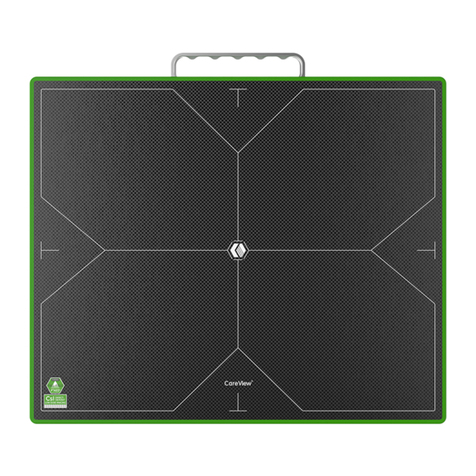
Page 6 of 57
Table of Contents
Attention……………………………….………………………………………...………………....3
General Safety Information……………………….…………………………………………..........4
1Overview..........................................................................................................................................8
1.1 Features.........................................................................................................................................8
1.2 Intended Use.................................................................................................................................8
1.3 Typical Patient Doses ...................................................................................................................8
1.4 Configuration................................................................................................................................9
2Product Description......................................................................................................................10
2.1 Components................................................................................................................................10
2.2 Detector....................................................................................................................................... 11
2.3 Power Box ..................................................................................................................................14
2.4 Charging Dock............................................................................................................................15
2.5 Li-Polymer Battery.....................................................................................................................16
3System Integration........................................................................................................................17
3.1 System Components ...................................................................................................................17
3.1.1 Typical Generator Specifications........................................................................................17
3.1.2 Detector Operation Conditions...........................................................................................18
3.1.3 Workstation (Recommended).............................................................................................19
3.2 X-ray Sync Mode........................................................................................................................19
3.2.1 External Sync Mode ...........................................................................................................19
3.2.2 Software Sync Mode...........................................................................................................20
3.2.3 Manual Sync Mode............................................................................................................. 21
3.2.4 F2AED.................................................................................................................................23
3.3 Network Connection and Power Supply.....................................................................................23
3.3.1 Wireless Connection Powered by Battery ..........................................................................23
3.3.2 Wireless Connection Powered by Power Box....................................................................24
3.3.3 Wired Connection...............................................................................................................24
4Installation.....................................................................................................................................25
4.1 Unpacking...................................................................................................................................25
4.2 Hardware Installation..................................................................................................................27
4.2.1 CareView 750Cw................................................................................................................27
4.2.2 CareView 750C...................................................................................................................29
4.3 Network Configuration...............................................................................................................32
5Wireless Communication .............................................................................................................35
5.1 Architecture ................................................................................................................................35
5.2 Specification...............................................................................................................................36
5.3 Initial Setting ..............................................................................................................................36
5.4 Detector Wireless Information....................................................................................................37
5.5 Wireless LAN Diagnostics .........................................................................................................39
5.6 Intended Use Environment.........................................................................................................40




























